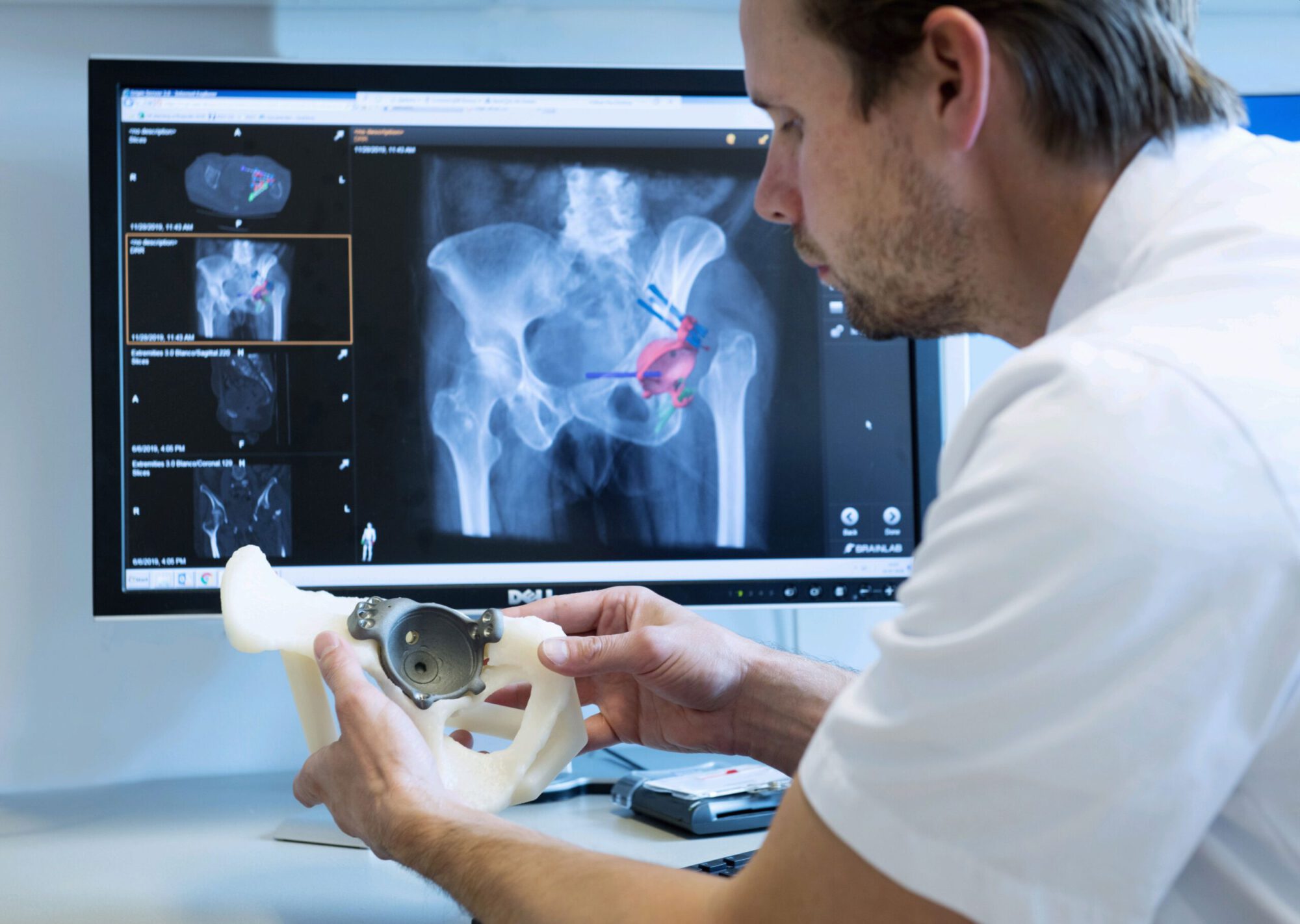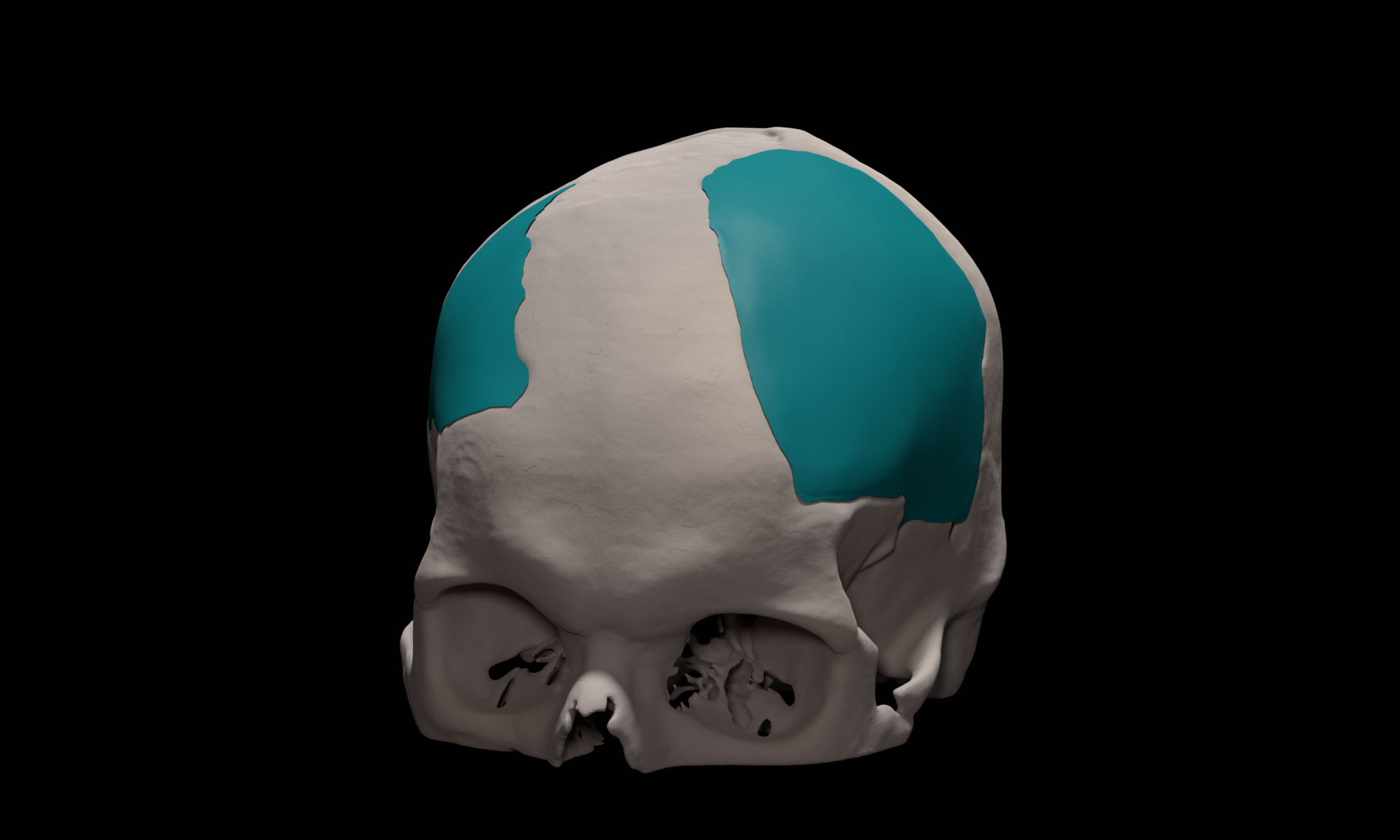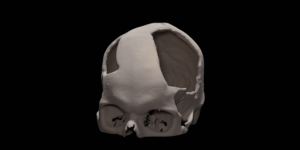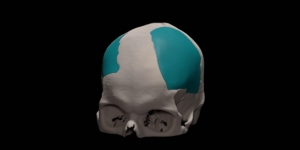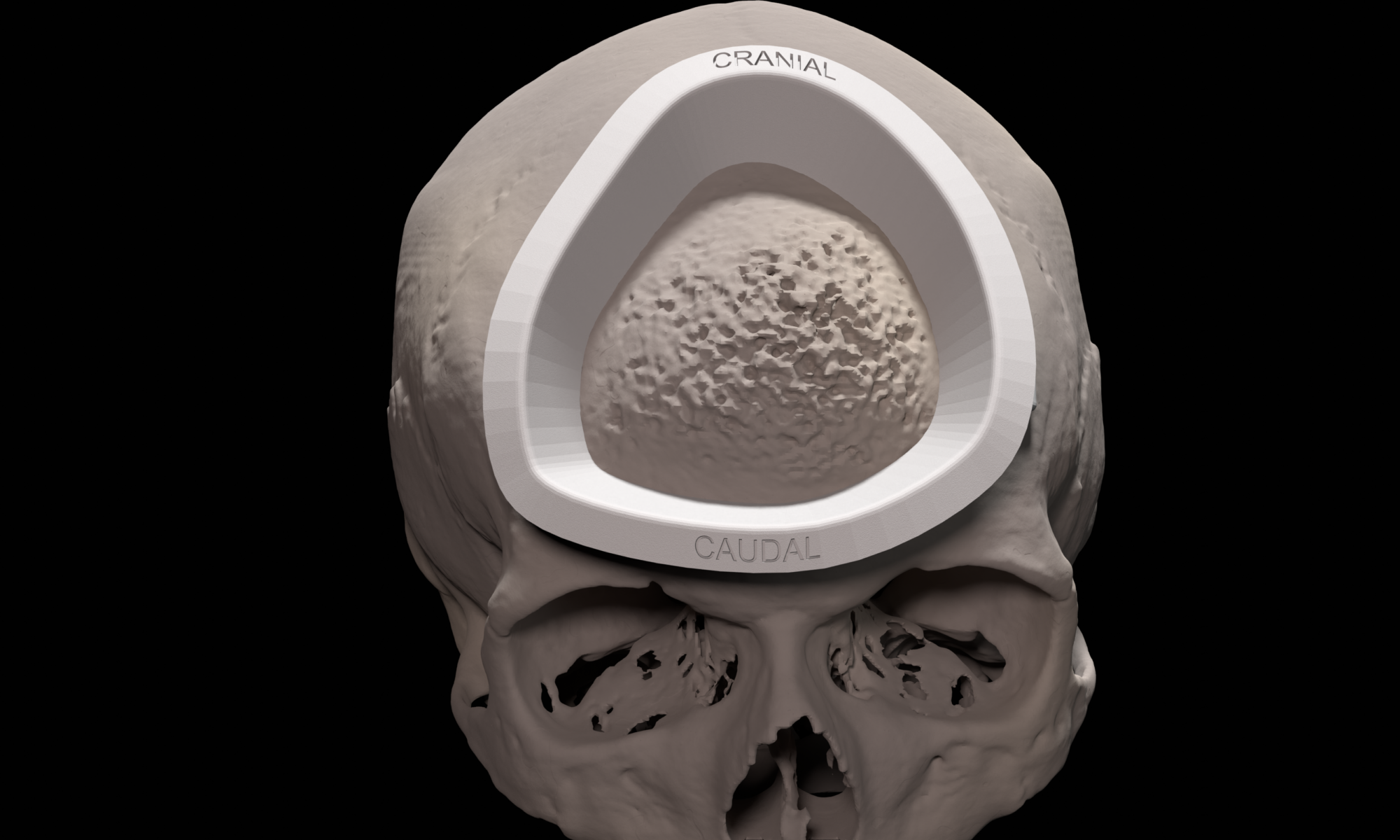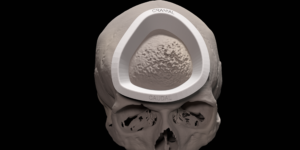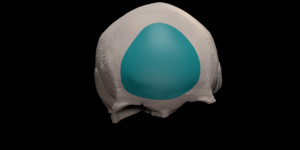After trauma a part of the skull might be damaged or lost. A reconstruction of the skull can be performed using patient specific implants. The implants are designed to exactly fit the defect and restore the patient anatomy. Reconstruction includes the skull bone, but can also incorporate surrounding structures such as the orbital roof, orbital wall, orbital rim or zygoma. The patient specific 3D virtually designed implants enables us to perform reconstructions that may have not been possible using conventional reconstruction methods.
Oncology
When a tumor invades the skull bone and surgical removal is indicated, the procedure is 3D virtually planned. The removal of the tumor including a required margin is 3D virtually planned combining information from different imaging modalities, such as CT and MRI. The surgical resection planning is translated to the operation room by designing patient specific surgical guides that uniquely fit the patient anatomy and indicate the virtually planned resection during surgery. Because the use of a surgical cutting guide creates a predictable bone defect, a patient specific skull implant can be designed to accurately reconstruct the bone defect.
